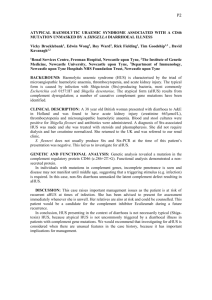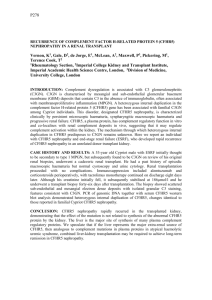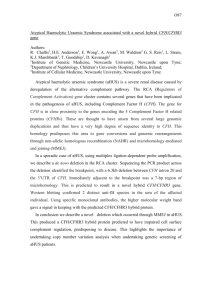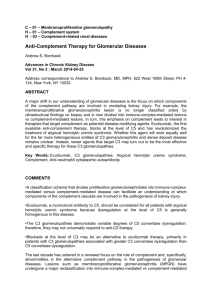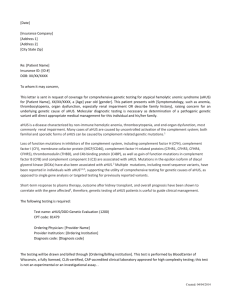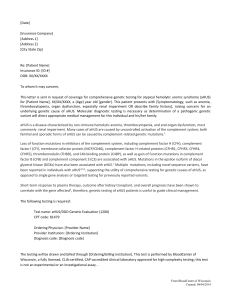O35 Outcome of patients with pregnancy
advertisement
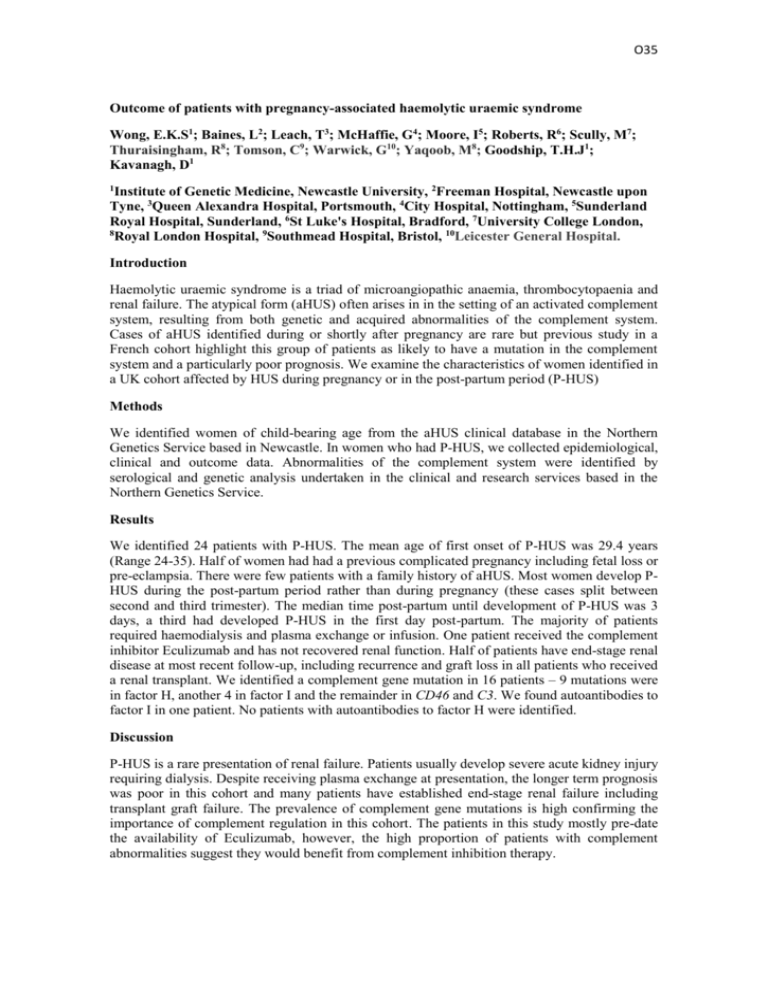
O35 Outcome of patients with pregnancy-associated haemolytic uraemic syndrome Wong, E.K.S1; Baines, L2; Leach, T3; McHaffie, G4; Moore, I5; Roberts, R6; Scully, M7; Thuraisingham, R8; Tomson, C9; Warwick, G10; Yaqoob, M8; Goodship, T.H.J1; Kavanagh, D1 1 Institute of Genetic Medicine, Newcastle University, 2Freeman Hospital, Newcastle upon Tyne, 3Queen Alexandra Hospital, Portsmouth, 4City Hospital, Nottingham, 5Sunderland Royal Hospital, Sunderland, 6St Luke's Hospital, Bradford, 7University College London, 8 Royal London Hospital, 9Southmead Hospital, Bristol, 10Leicester General Hospital. Introduction Haemolytic uraemic syndrome is a triad of microangiopathic anaemia, thrombocytopaenia and renal failure. The atypical form (aHUS) often arises in in the setting of an activated complement system, resulting from both genetic and acquired abnormalities of the complement system. Cases of aHUS identified during or shortly after pregnancy are rare but previous study in a French cohort highlight this group of patients as likely to have a mutation in the complement system and a particularly poor prognosis. We examine the characteristics of women identified in a UK cohort affected by HUS during pregnancy or in the post-partum period (P-HUS) Methods We identified women of child-bearing age from the aHUS clinical database in the Northern Genetics Service based in Newcastle. In women who had P-HUS, we collected epidemiological, clinical and outcome data. Abnormalities of the complement system were identified by serological and genetic analysis undertaken in the clinical and research services based in the Northern Genetics Service. Results We identified 24 patients with P-HUS. The mean age of first onset of P-HUS was 29.4 years (Range 24-35). Half of women had had a previous complicated pregnancy including fetal loss or pre-eclampsia. There were few patients with a family history of aHUS. Most women develop PHUS during the post-partum period rather than during pregnancy (these cases split between second and third trimester). The median time post-partum until development of P-HUS was 3 days, a third had developed P-HUS in the first day post-partum. The majority of patients required haemodialysis and plasma exchange or infusion. One patient received the complement inhibitor Eculizumab and has not recovered renal function. Half of patients have end-stage renal disease at most recent follow-up, including recurrence and graft loss in all patients who received a renal transplant. We identified a complement gene mutation in 16 patients – 9 mutations were in factor H, another 4 in factor I and the remainder in CD46 and C3. We found autoantibodies to factor I in one patient. No patients with autoantibodies to factor H were identified. Discussion P-HUS is a rare presentation of renal failure. Patients usually develop severe acute kidney injury requiring dialysis. Despite receiving plasma exchange at presentation, the longer term prognosis was poor in this cohort and many patients have established end-stage renal failure including transplant graft failure. The prevalence of complement gene mutations is high confirming the importance of complement regulation in this cohort. The patients in this study mostly pre-date the availability of Eculizumab, however, the high proportion of patients with complement abnormalities suggest they would benefit from complement inhibition therapy.
